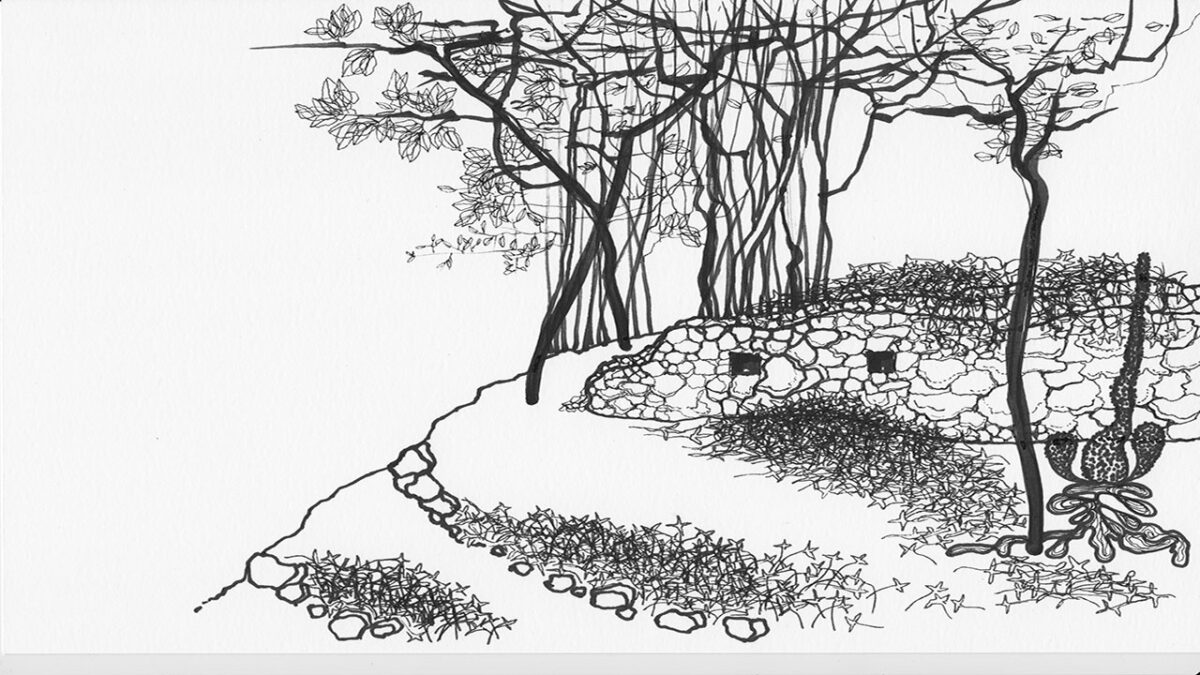
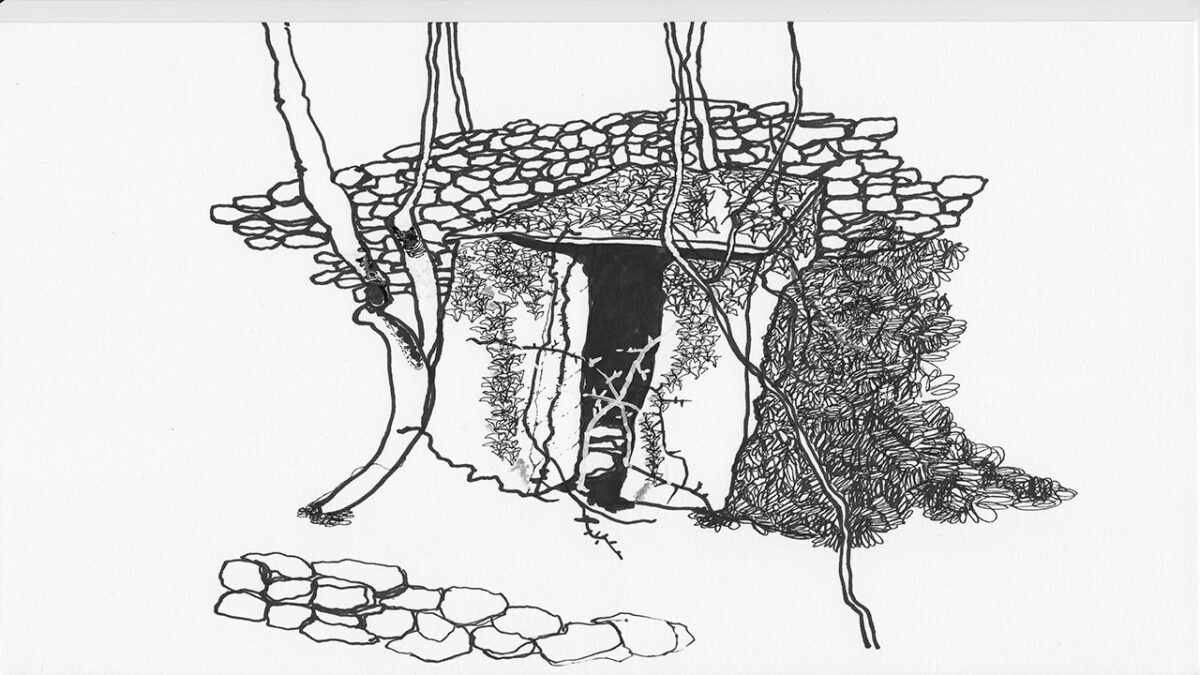
Structures
Filignano architectural structures, published in Walking Publics/Walking Arts, 2021
This series of drawings depicts architectural structures currently being subsumed by the forest. Starting at my home, I walk out and onto ancient footpaths and into the woods in Italy’s Apennine mountains, as I have done for decades. Repeatedly walking the routes that create a network between villages, I have witnessed the covering and partial disappearance of architectural structures made by the Sannite and Roman peoples, and family members who have worked the land since.
As the structure of the Italian family and labour patterns continue to shift, fewer people are sustained by working land. Dry-stone terraces built by hand to clear the ground for arable and pasture use are now largely shrouded in green: oak, beech and birch grow undisturbed, nurturing wild boar, deer, pine martin, porcupine, chamoix, wolves and bears. Hunting has diminished, birds are returning. Orchids and saffron-bearing croci give way to fungi as each new year ends.
I live between Scotland and Italy, and these watercolour drawings were made from memory to make place present, whilst in Covid self-isolation in Strathaven in Dec 2020.
Published in Walking Publics/Walking Arts (COVID-19 Rapid Response project funded by the Arts and Humanities Research Council exploring the potential of the arts to sustain, encourage and more equitably support walking during and recovering from a pandemic), 2021
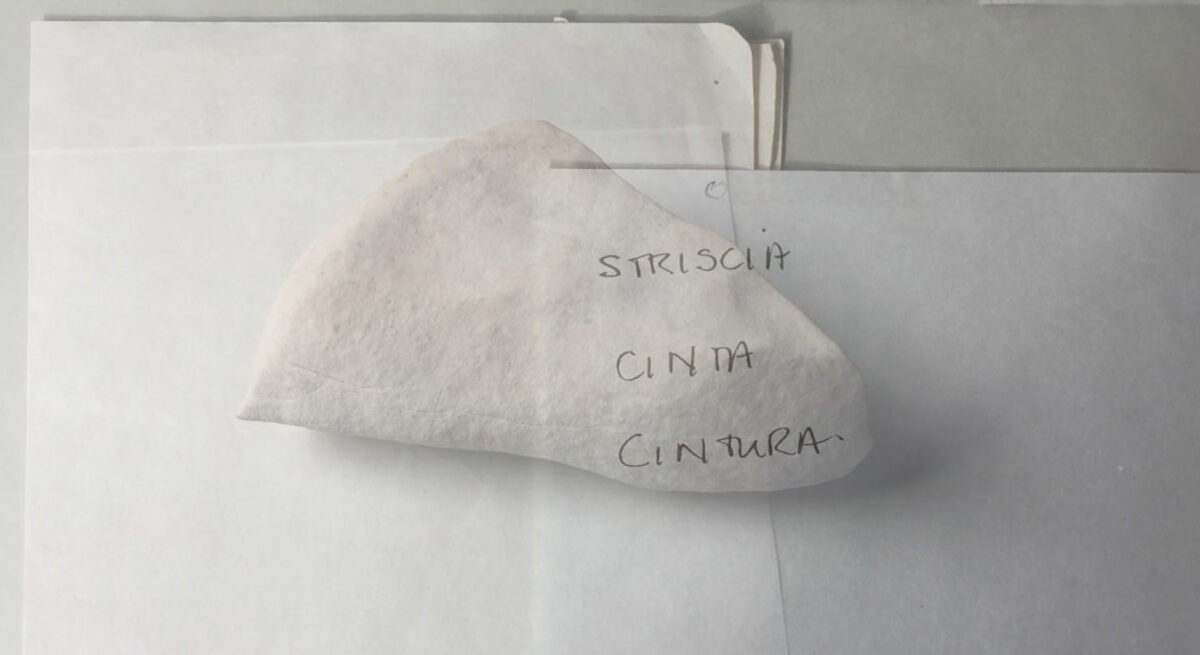
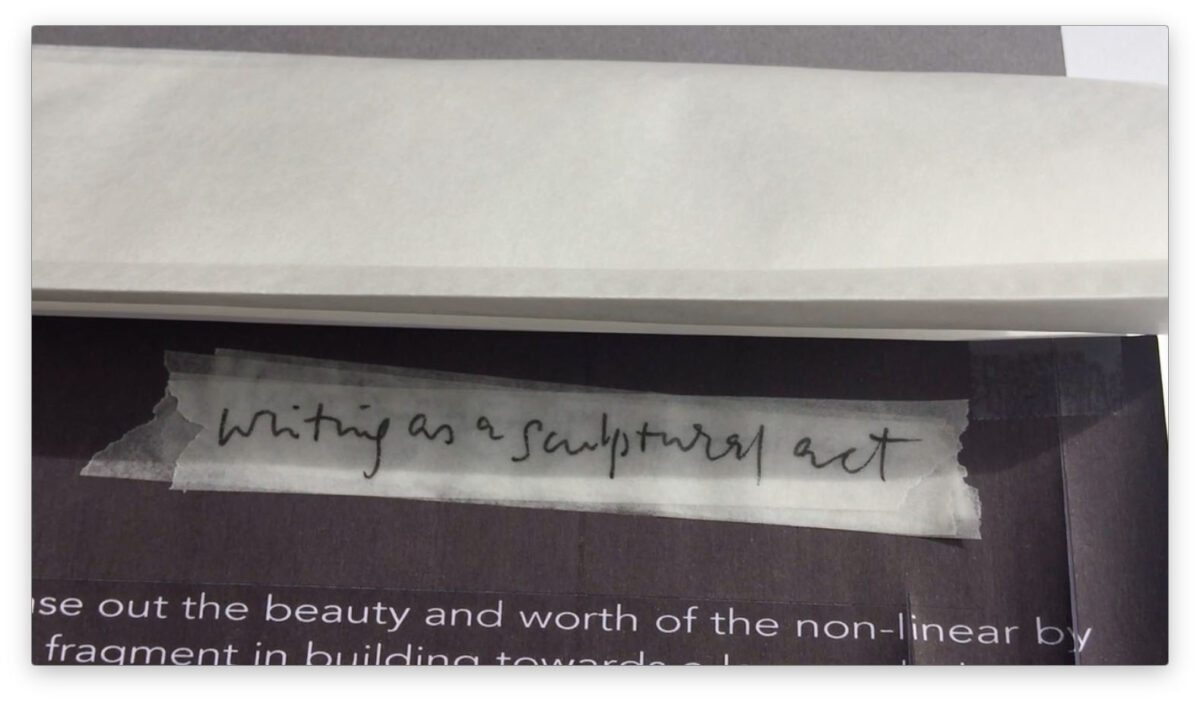
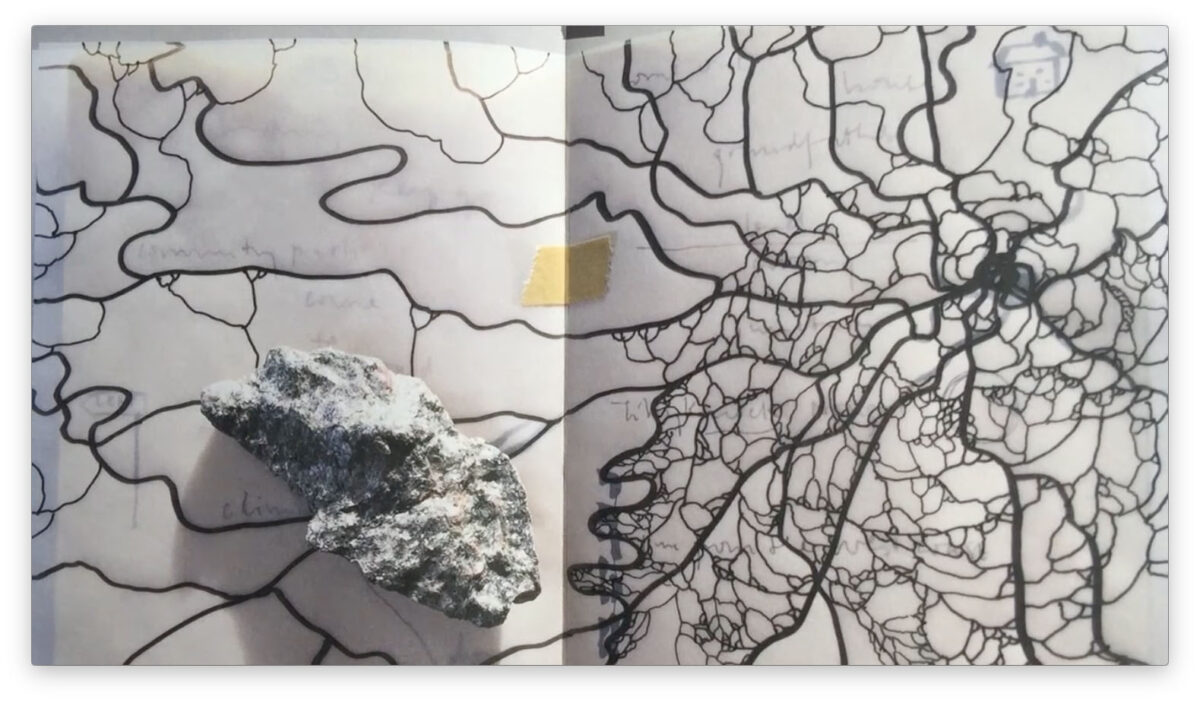
Language, Listening and Belonging
The video Language, Listening and Belonging (00:04:27) was made to accompany my chapter in the book The Creative Critic: Writing As/About Practice, Routledge, 2018; a collection edited by Katja Hilevaara and Emily Orley
The collection of creative-critical writings brings together examples of how to think and write about one’s own work in creative yet academically rigorous ways. How to discuss and analyse our own work, or work that has inspired us, is explored without compromising the creative drive that drove us in the first place. With a foreword, afterword and middlewords by Jane Rendell, Peter Jaeger, Maria Fusco and Timothy Mathews respectively, and over thirty contributions by leading researcher-practitioners and emerging artists alike.
Languages – visual, spoken, written; performed – lead my life and guide my art practice. Performing language is explored in a series of situations, occupying and shaping sites, locations and contexts. Through ‘live’ writing works are produced and subjects investigated in public research studios. As embodied artistic catalyst, I have become the Creative Correspondent and The Pedlar, inhabiting characters to simultaneously enact and explore through staging and processes of creative encounter, employing and sharing a creative toolkit of self, object, voice, sound, drawing, writing, film, travel, learning, story and people.
Language, Listening and Belonging (00:04:27) in Language based Artistic Research Special Interest Group PRACTICE SHARING
2019 Screening: Language, Listening and Belonging (video) in ‘Convocation: on Expanded Language-based Practices, Research Pavilion, 58th Venice Biennale, Venice, Italy
2017 Screening: Language, Listening and Belonging (video) in conference Taking the Essay for a Walk, Hospitalfield, Arbroath, Scotland
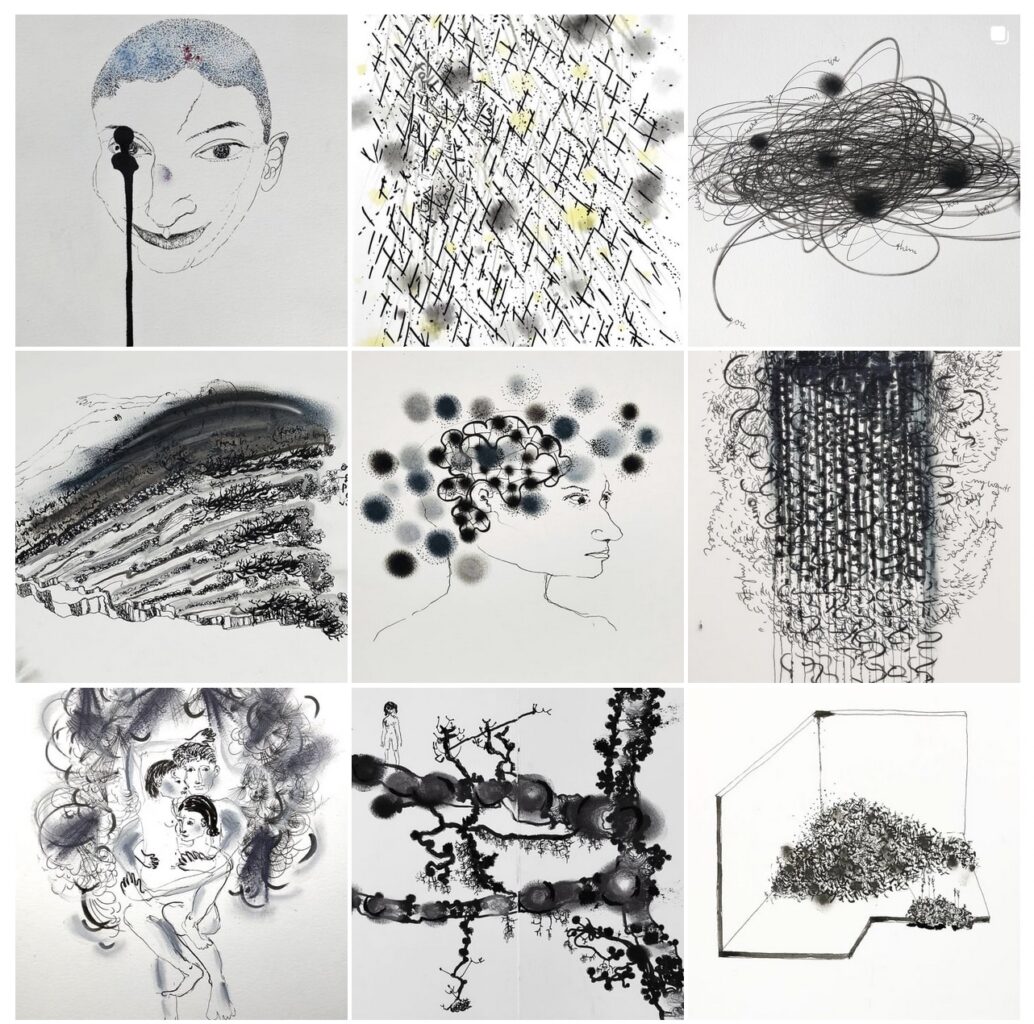
Image and Text
Creative and playful relationships between image and text are very important to me, and I use them in drawings to dynamically convey meaning through visual and written language. I regularly show and share work in progress on Instagram.
tracy.mackenna.studio
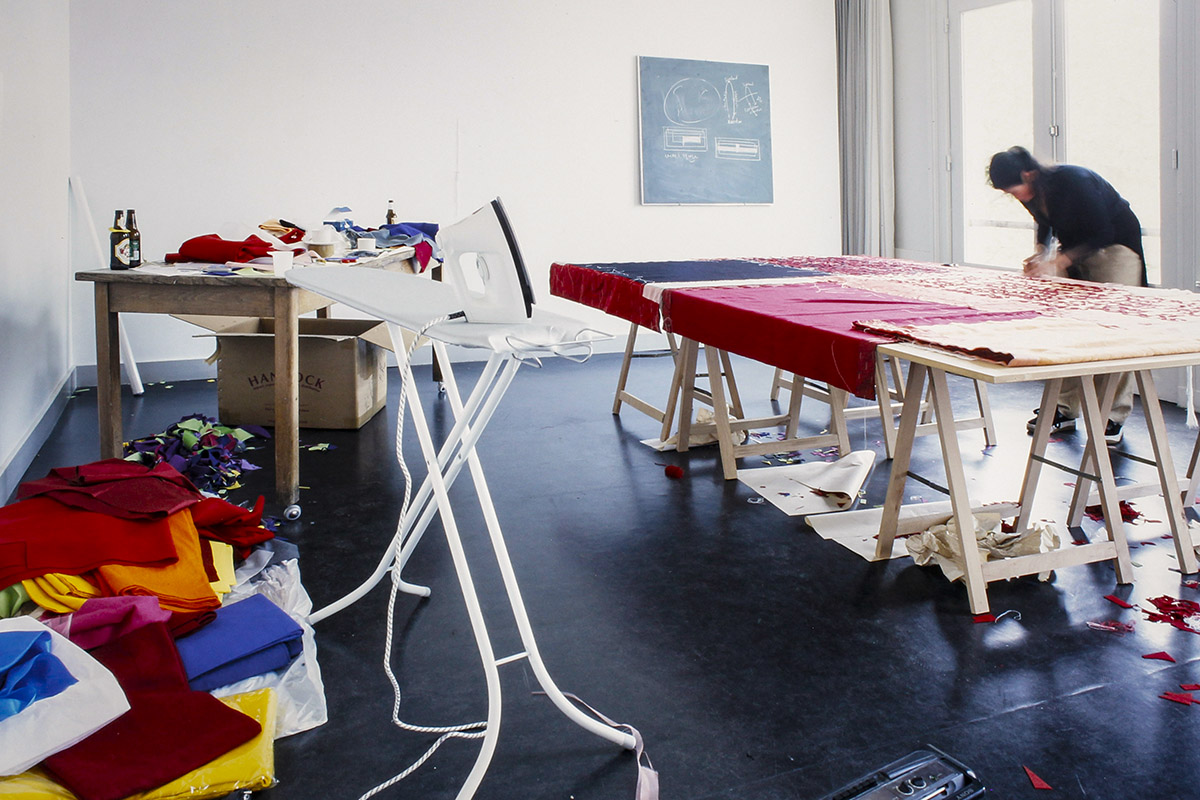
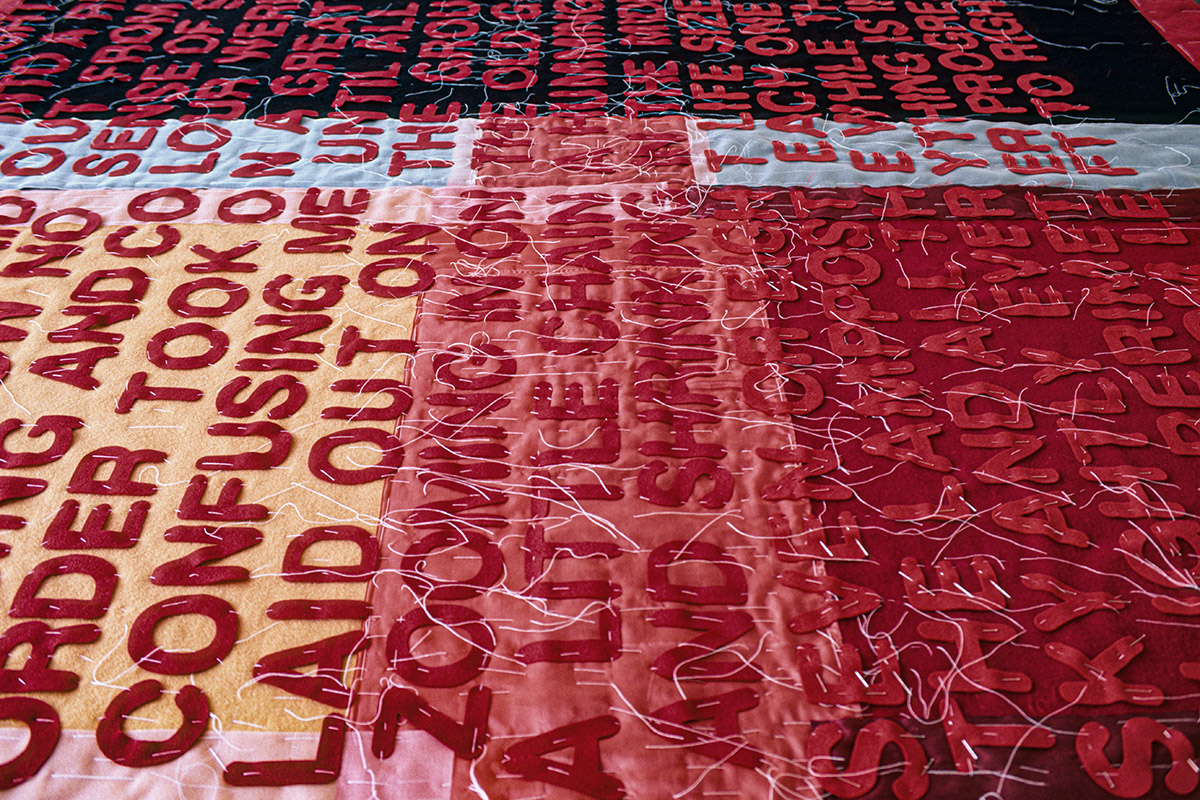
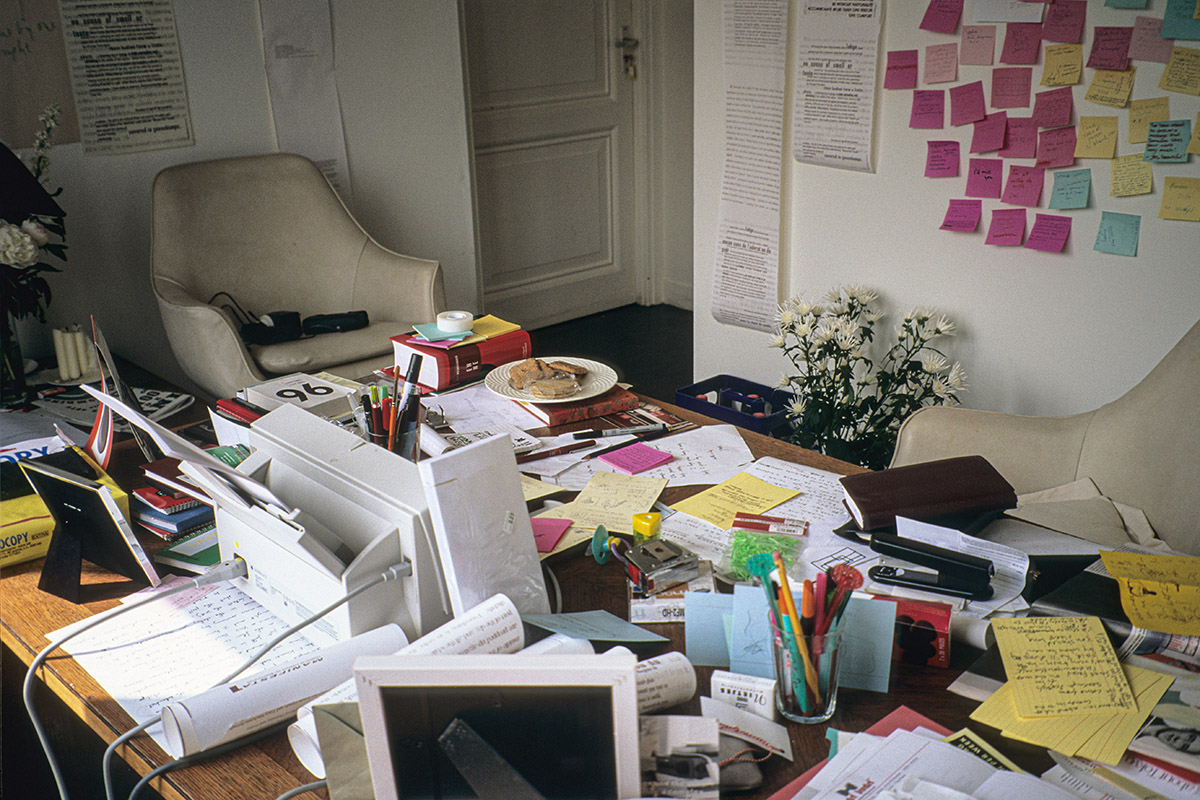
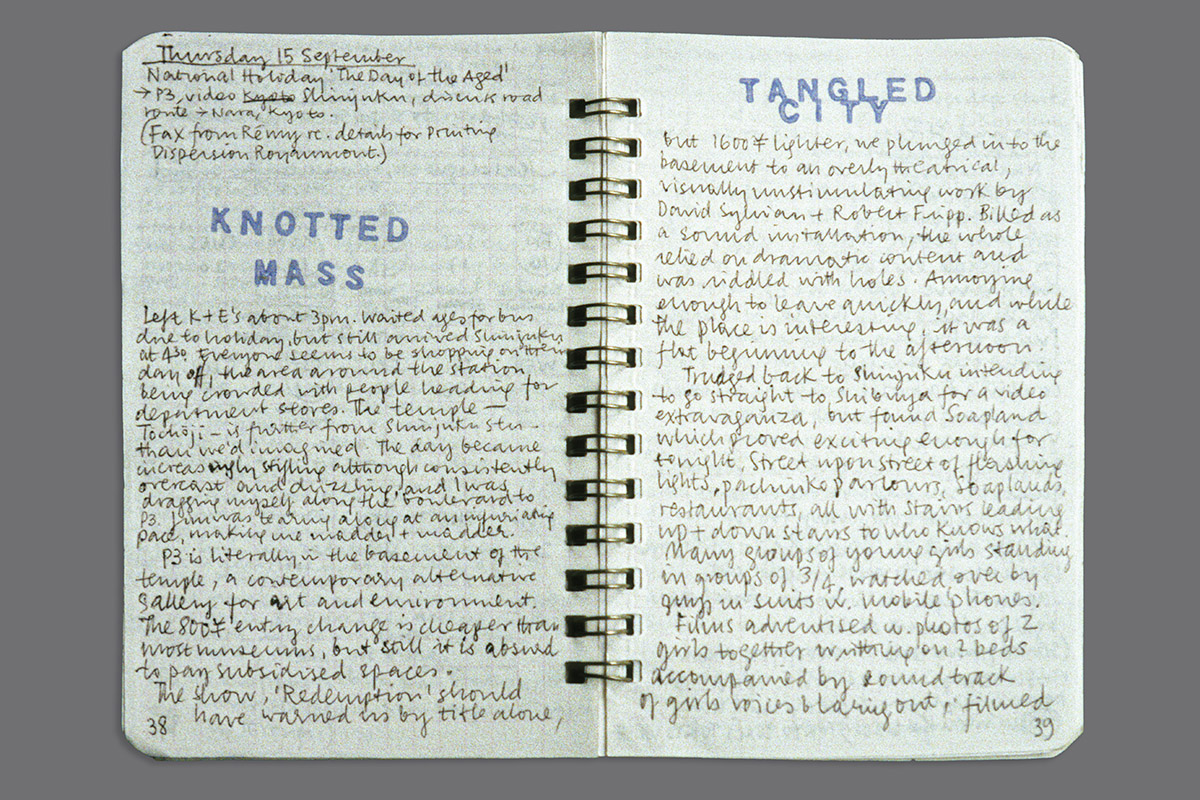
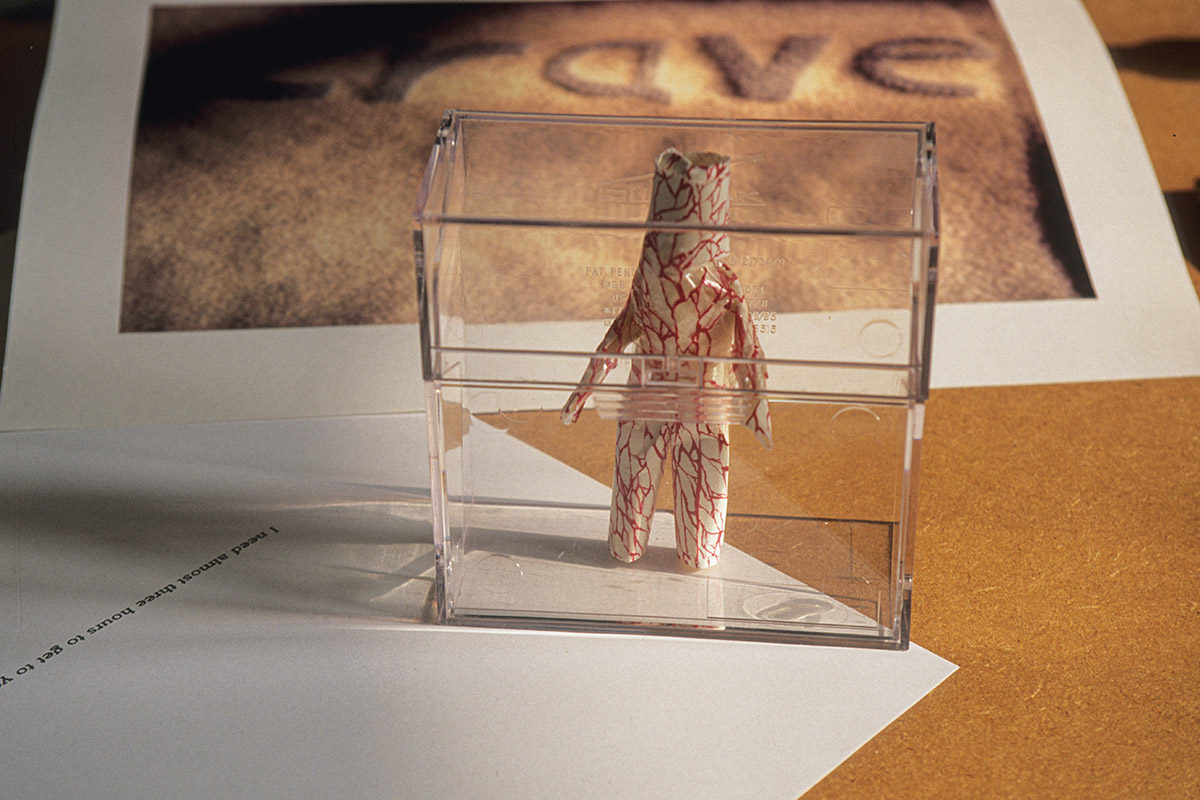
Stories, Posters, Blankets
Laboratory for Comparative Studies
Manifesta 1, Rotterdam Center for the Arts, Rotterdam, the Netherlands, 1996
Manifesta 1 was billed as a new European contemporary art event, taking place every two years at a different European location. The first edition was realised in Rotterdam in 1996. In the European Nomadic Biennial more than 70 artists from over 25 European countries presented their work in more than 12 museums and cultural institutions around the Museumpark in the centre of Rotterdam.
At the core of Manifesta 1 was The Laboratory for Comparative Studies, located in Villa Alkmeaer. There, I worked in public for the duration of Manifesta 1, alongside the American artist Joseph Grigely, and the Russian artist Yuri Leiderman, in the context of work by Luca Quartana (Italy) and Uri Tzaig (Israel). In the year preceding the public opening of Manifesta 1, Joseph, Yuri, Luca, Uri and I worked with curator Andrew Renton and Manifesta staff to devise the The Laboratory for Comparative Studies.
During the biennial I was active every day in my public studio conversting with visitors, and writing stories for a series of posters that were spread throughout the city. In the adjacent gallery I made a series of ‘text blankets’ that incorporated visitors’ observations and feelings abut how they lived in their respective cities, and about what Europe was to them. On completion, these blankets were shared amongst the people who contributed words to them, for use as they wished.
The curators of Manifesta 1 were Katalyn Neray (Budapest), Rosa Martinez (Barcelona), Viktor Misiano (Moscow), Andrew Renton (London) and Hans Ulrich Obrist (Paris/Zurich). “The inner dynamics of Manifesta 1 is not only an art show. The exhibition MANIFESTA I in Rotterdam in the summer of 1996, will be the climax to an intensive dialogue about new developments in the visual arts and will represent the first fruit of a new type of collaboration. Manifesta is a biennial event. It must have the ability to reinvent itself for each new edition. Subsequent events will take place in different regions of Europe. However, it is intended that a permanent administrative base for Manifesta should be established in the Netherlands, as a means of ensuring organisational continuity. For the necessary flow of information we use the most effective means of modern communication: Electronic Mail, access to the Internet and Multimedia data carriers such as CD-ROM.”.
The accompanying publication, Manifesta 1, the first edition of a new European Biennial of Contemporary Art, was published by the International Foundation Manifesta, 1996, URN 90-9009571-3
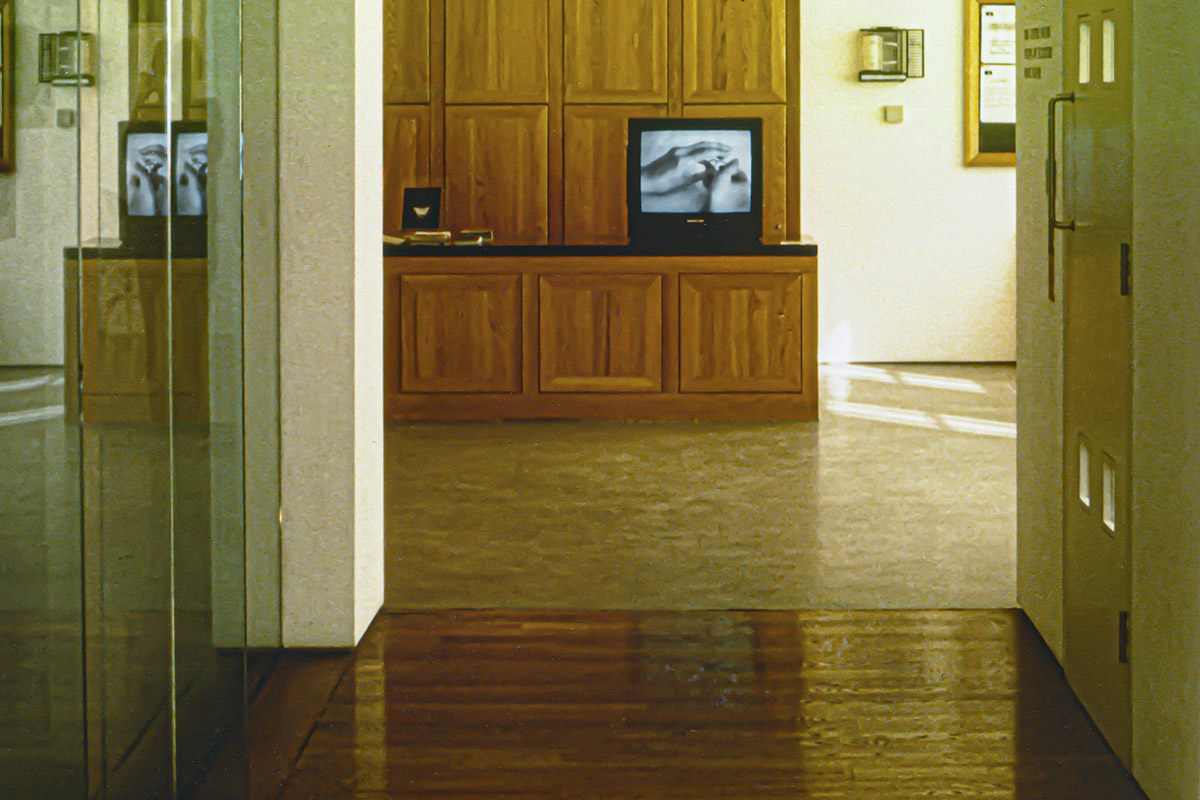
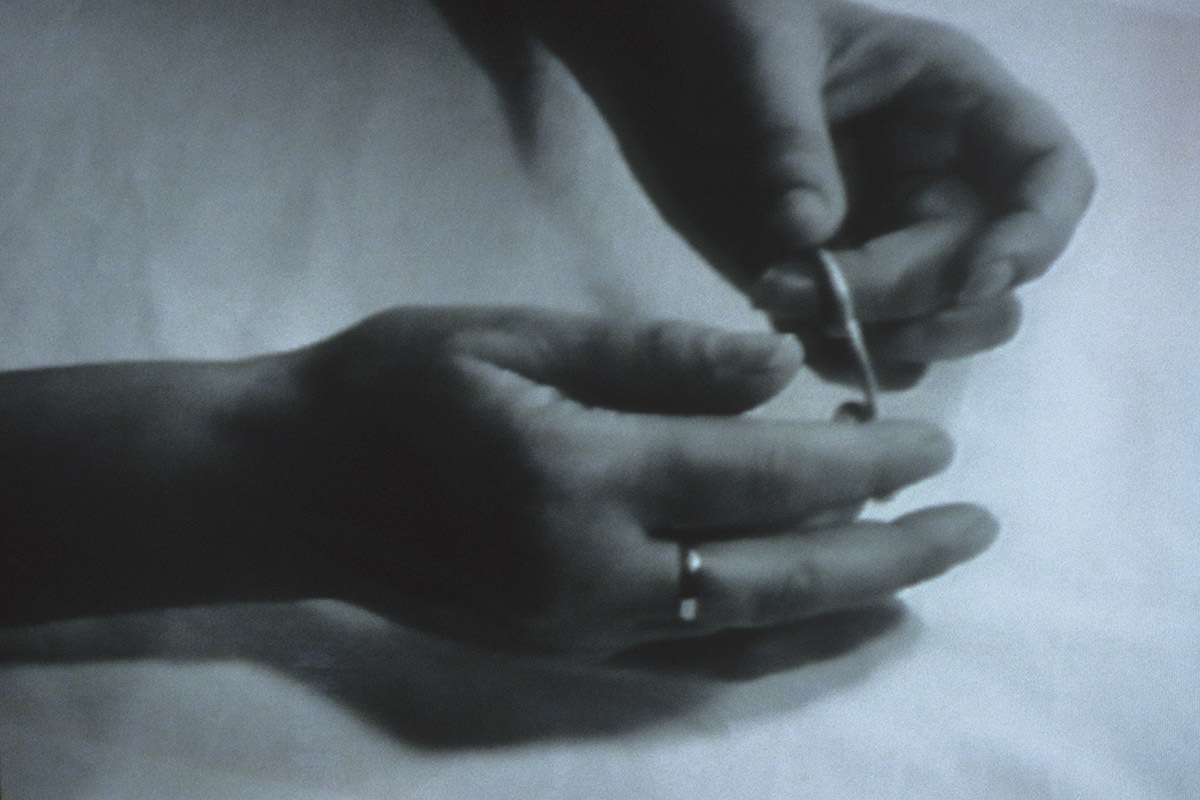
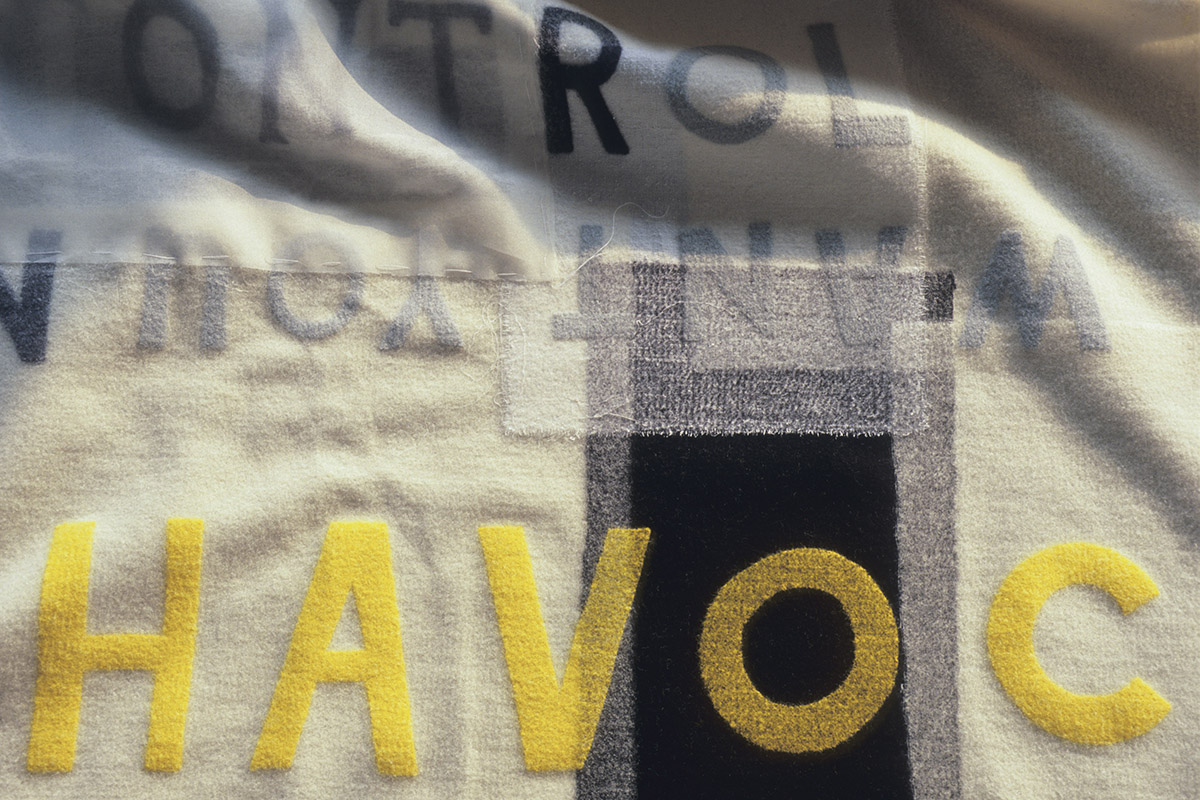
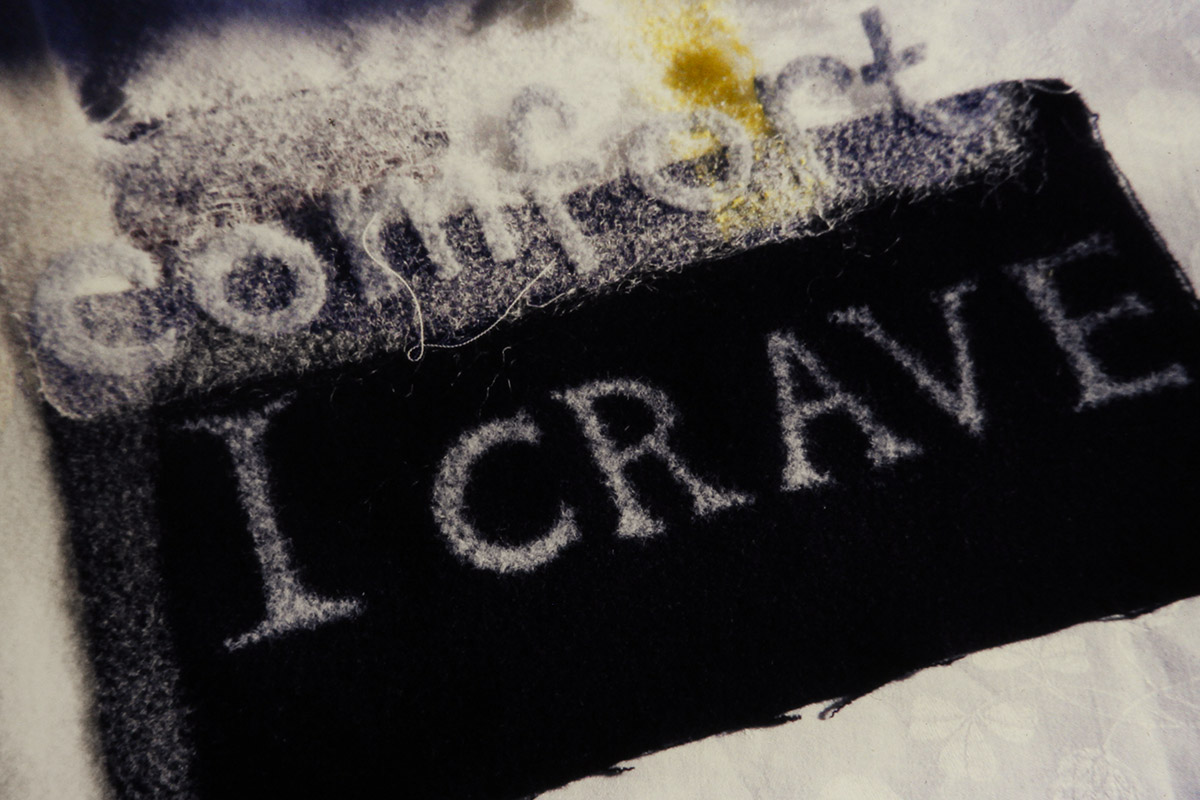
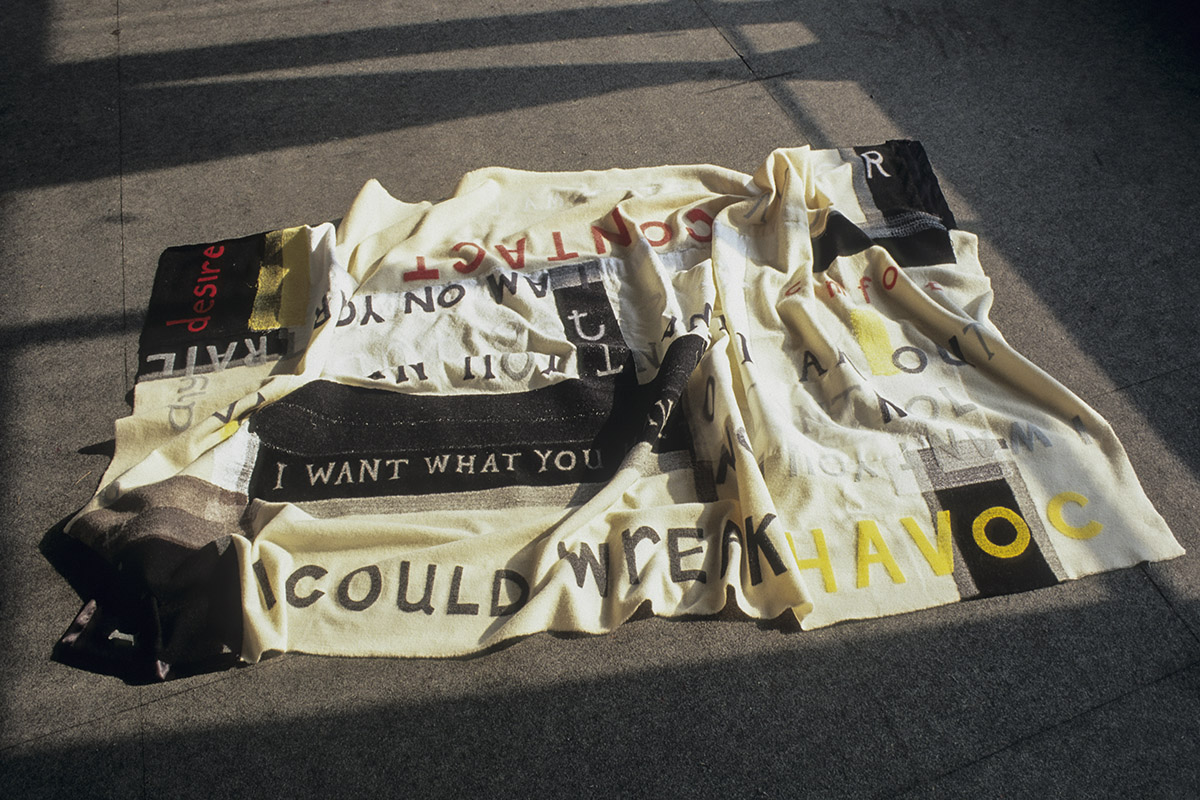
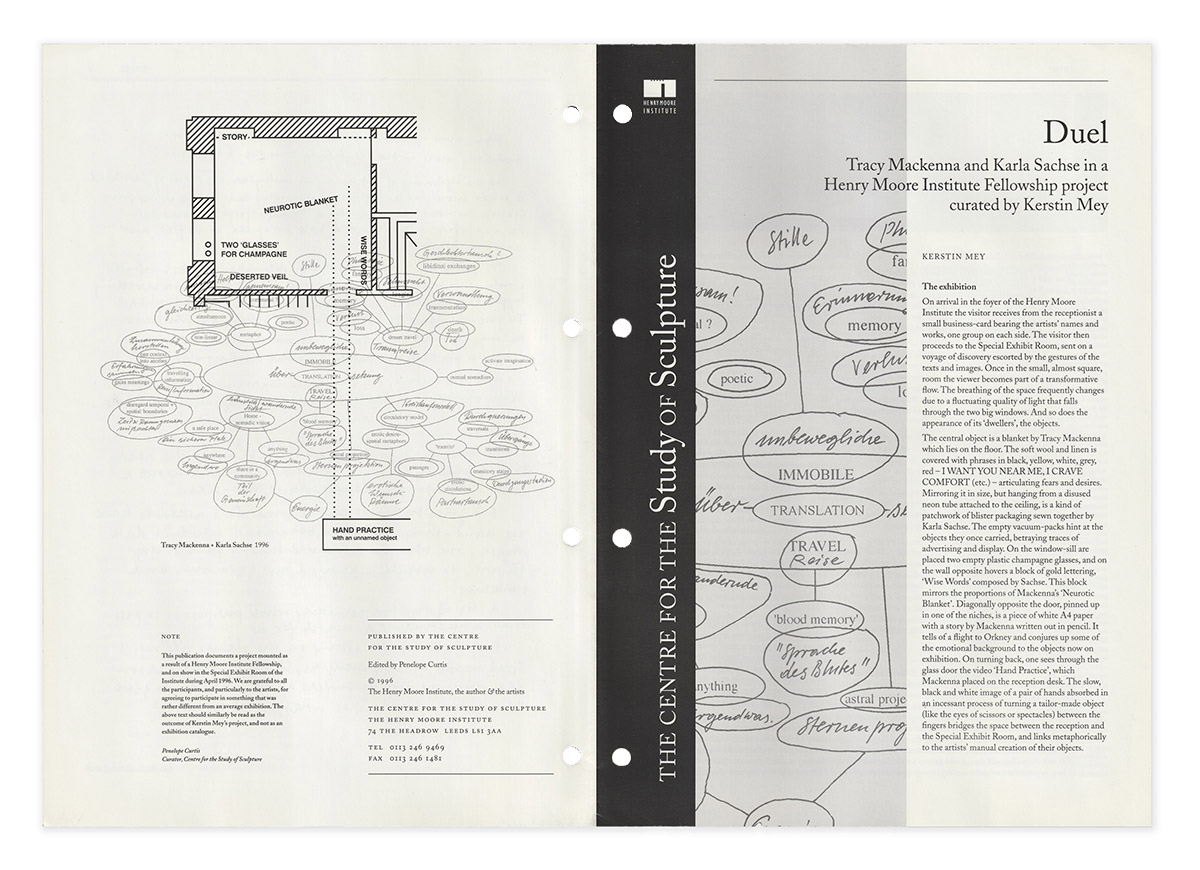
Duel Tracy Mackenna and Karla Sachse
The Centre for the Study of Sculpture, The Henry Moore Institute, Leeds, England, UK, 1996
Duel was a project conceived by Henry Moore Institute Fellow Kerstin May. Kerstin invited Tracy and the East Berlin German artist Karla Sachse to work in response to each other, with the notion of ‘sparring’ or ‘duelling’ as productive methods.
Kerstin said about the project in the accompanying publication, “The dialectics of presentation and representation, visibility and invisibility, presence and absence, form tangential points for the aesthetic practice of both Karla and Tracy, but it became apparent during our discussions in Berlin in December 1995 that the outcome of a collaboration could not be predicted. In many ways, ‘Duel’ seemed to be the appropriate word to describe the anticipated working process. A duel between two artists without the intention of restoring the honour of one through ‘wounding’ or ‘killing’ the other. This opportunity is less spectacular, yet more challenging.”.
Once in Leeds the artists’ objects quickly found their own places inside and outside the room. During the week I built up a small environment using my blanket (Tracy Mackenna, Neurotic Blanket, 1996). The video (Tracy Mackenna, Hand Practice, with an unnamed object, 1996) was installed at the entrance-desk to connect through the glass door of the room. Instead of ‘labelling’ their individual objects, the Karla and I had business cards printed. Karla spent a long time assembling her veil, turning her hands almost in the manner of those in my video, and applying the Letraset letters. Finally she put the two empty ‘glasses’ on the window-sill next to the veil to mark an imaginary space between her objects. Meanwhile I wrote my emotive story (Tracy Mackenna, Story, 1996) and, after placing it on the wall, dismantled my hut-like construction that had been built-up during the week, as it no longer served any purpose, and left the blanket to lie on the floor.
The publication, Duel, Tracy Mackenna and Karla Sachse in a Henry Moore Institute Fellowship project curated by Kerstin Mey, was edited by Penelope Curtis, published by The Centre for the Study of Sculpture, The Henry Moore Institute, Leeds, UK, 1996.
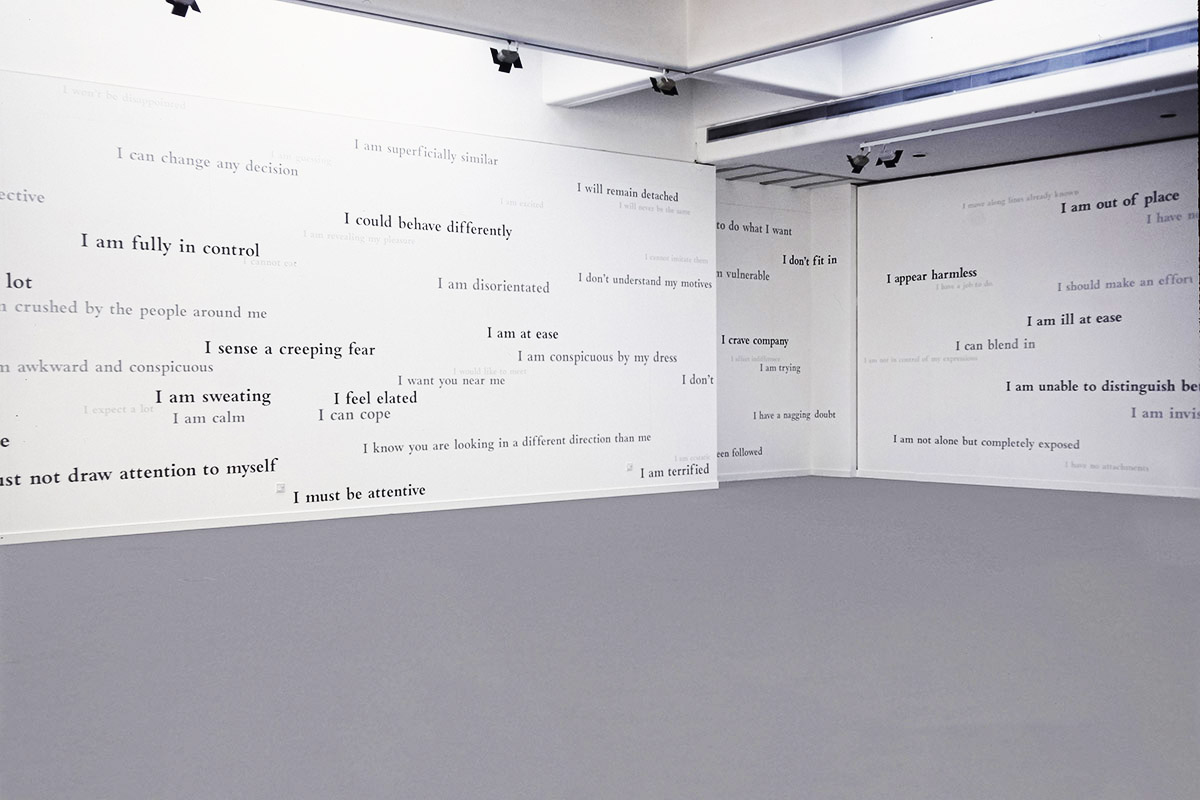
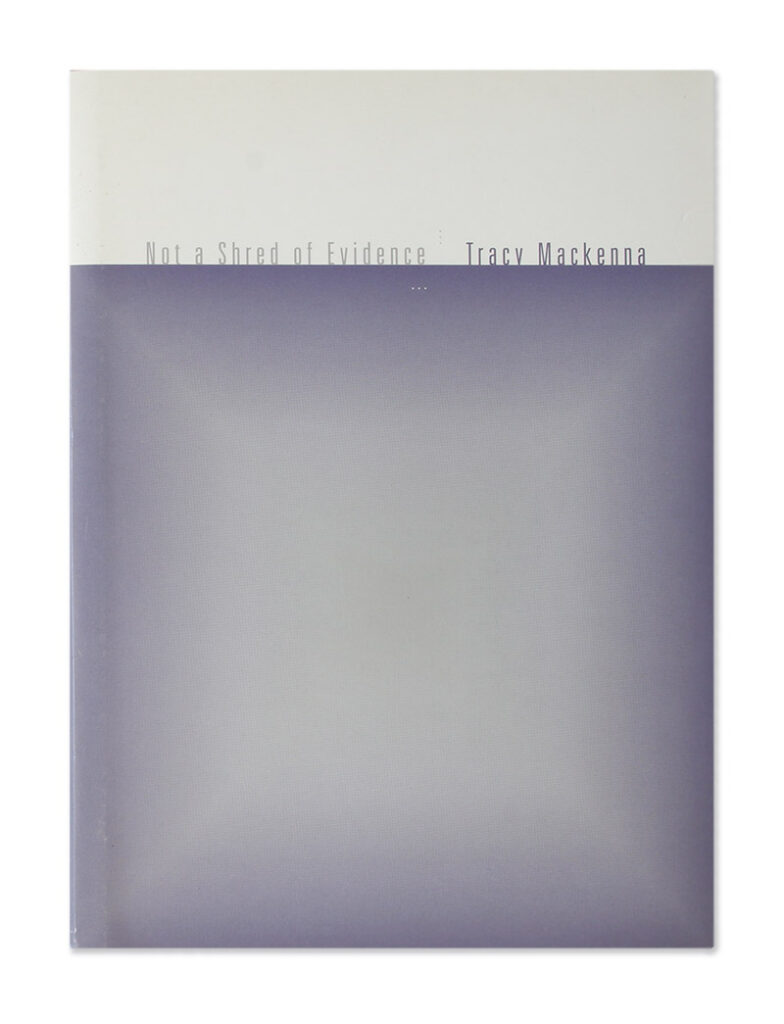
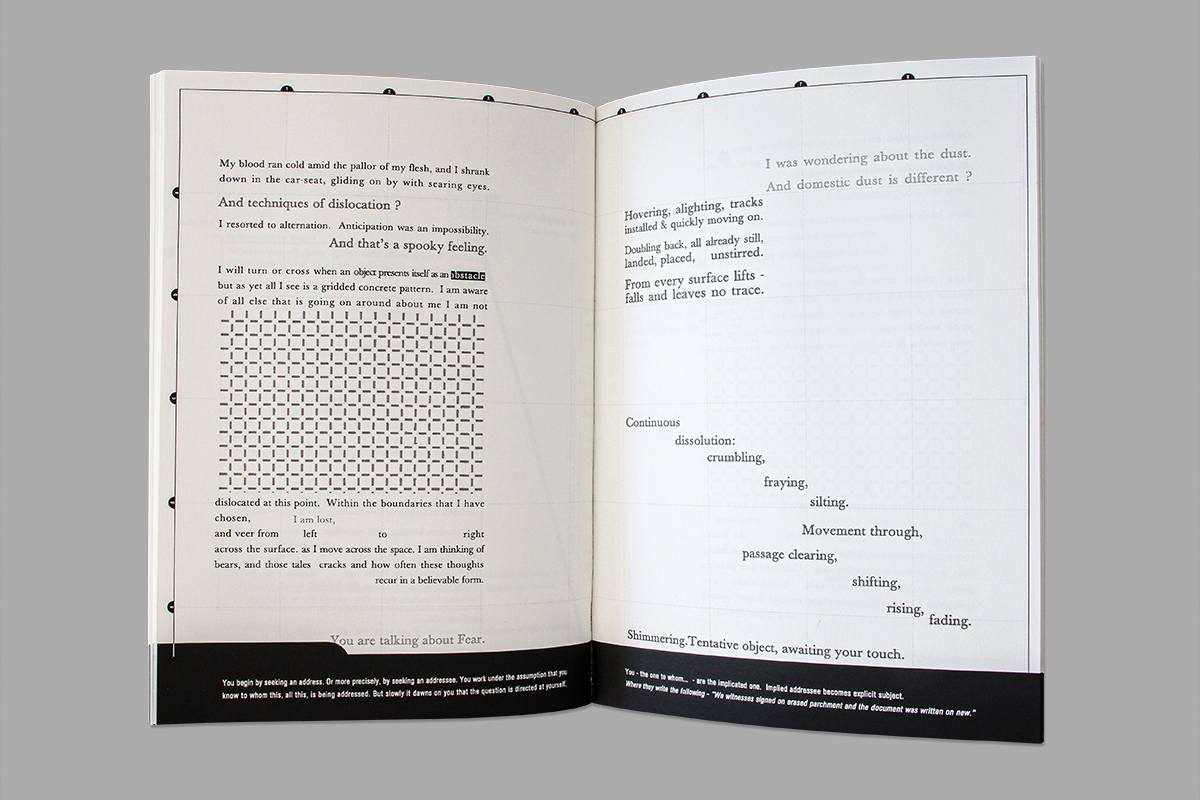
Not a Shred of Evidence
Mead Gallery, Warwick Arts Centre, University of Warwick, England, UK
18 Feb – 18 Mar, 1995
As part of Warwick Arts Centre’s series of commissions to mark its 20th birthday, the Mead Gallery commissioned me to create an installation for its vast main gallery, curated by Sarah Shalgosky. I made an immersive installation that covered the gallery’s walls from floor to ceiling and was made up of series of printed vinyl texts that moved through a range of sizes and tones of greys. The descriptive and highly subjective texts presented my psychological states and imaginary conversations whilst traveling or on the move in the year preceding the exhibition:
I appear harmless
I am quite alone
I will listen
I could ruin everything for everyone
I sense a creeping fear
I feel elated
The publication Not a shred of evidence was designed by Debi Ani to bring together a series of multi-lingual translations of a story that I wrote. Working in collaboration with members of the University of Warwick, my original text was given to each translator who in turn translated through two or three languages before passing on to the next translator. The purpose was to induce error, mistranslation and the particularities that each language holds before re-translating to the text’s original language – English. The final version of the story had shifted through genders and multiple meanings.
During the design process, designer Debi Ani gave each double-page spread to curator and writer Andrew Renton, who in response wrote a text that formed a commentary to my work that was presented as a ‘footer’ at the bottom of each spread.
Not a shred of evidence, Tracy Mackenna
69 Pages, published by Mead Gallery (Coventry), 1997
ISBN-10: 0-902683-36-5 / 0902683365
ISBN-13: 978-0-902683-36-5 / 9780902683365
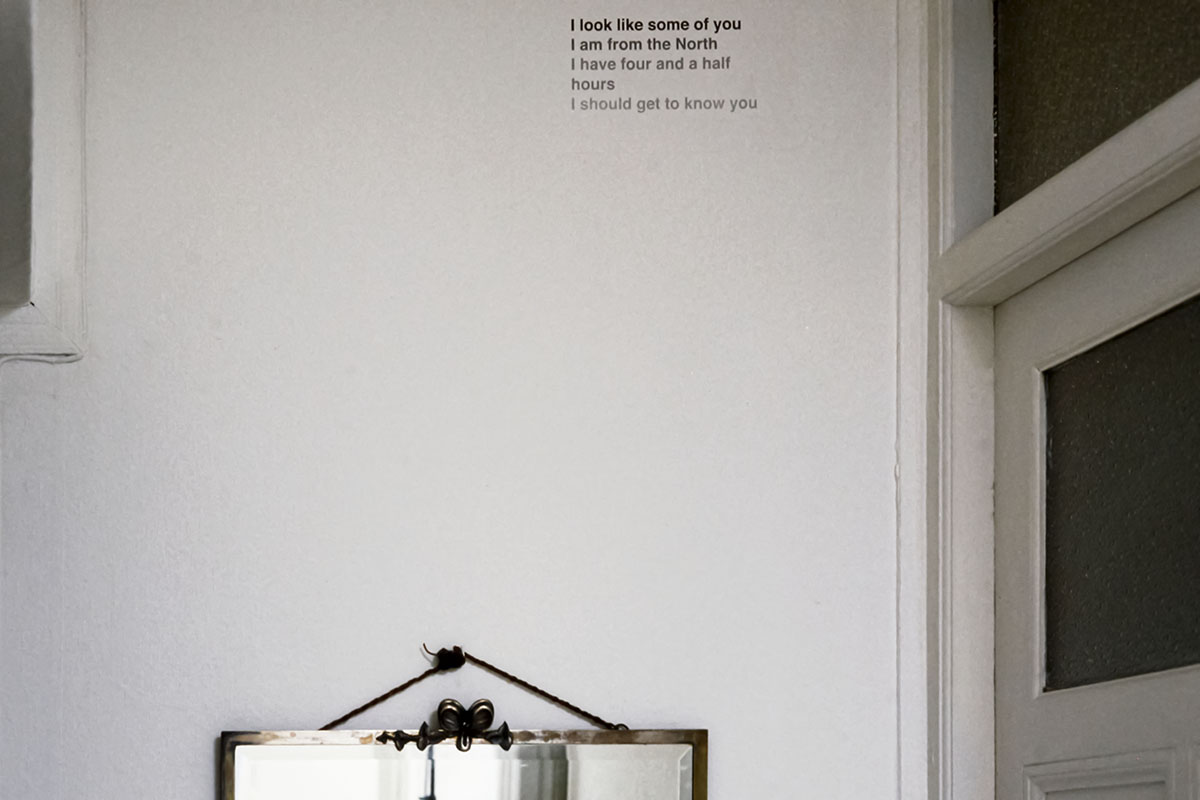
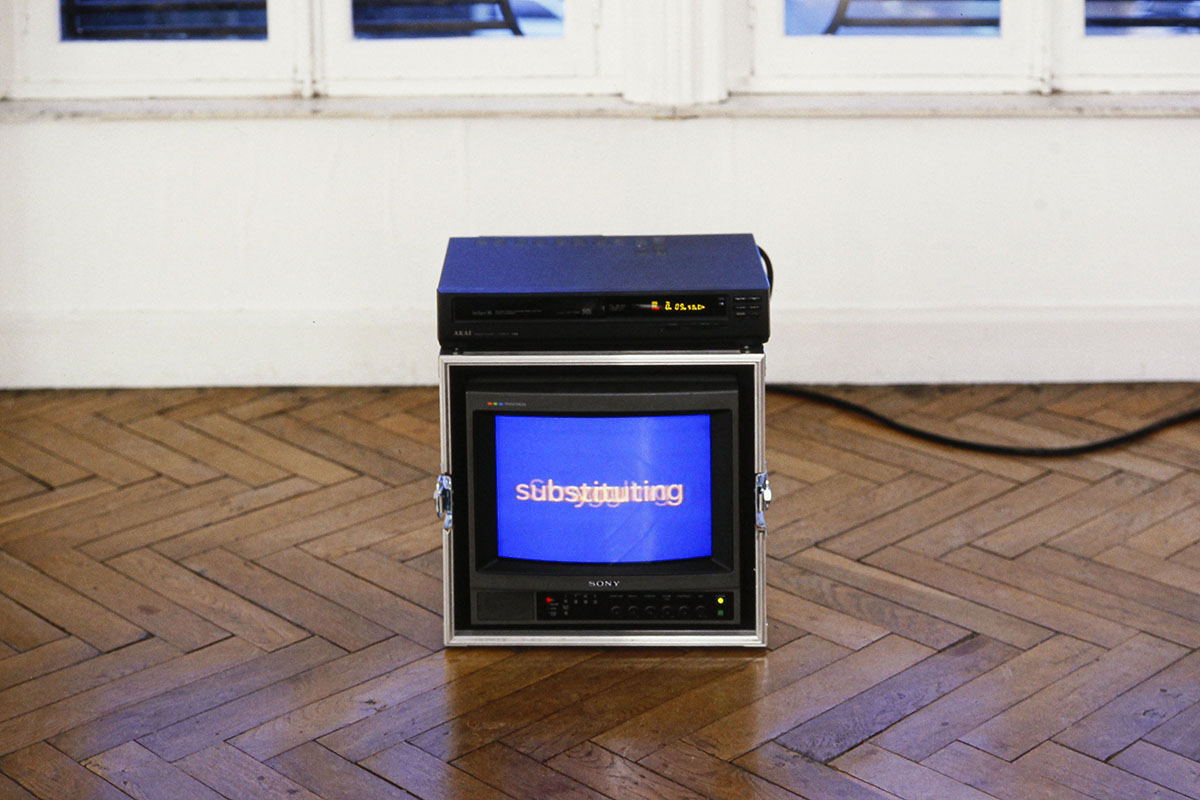
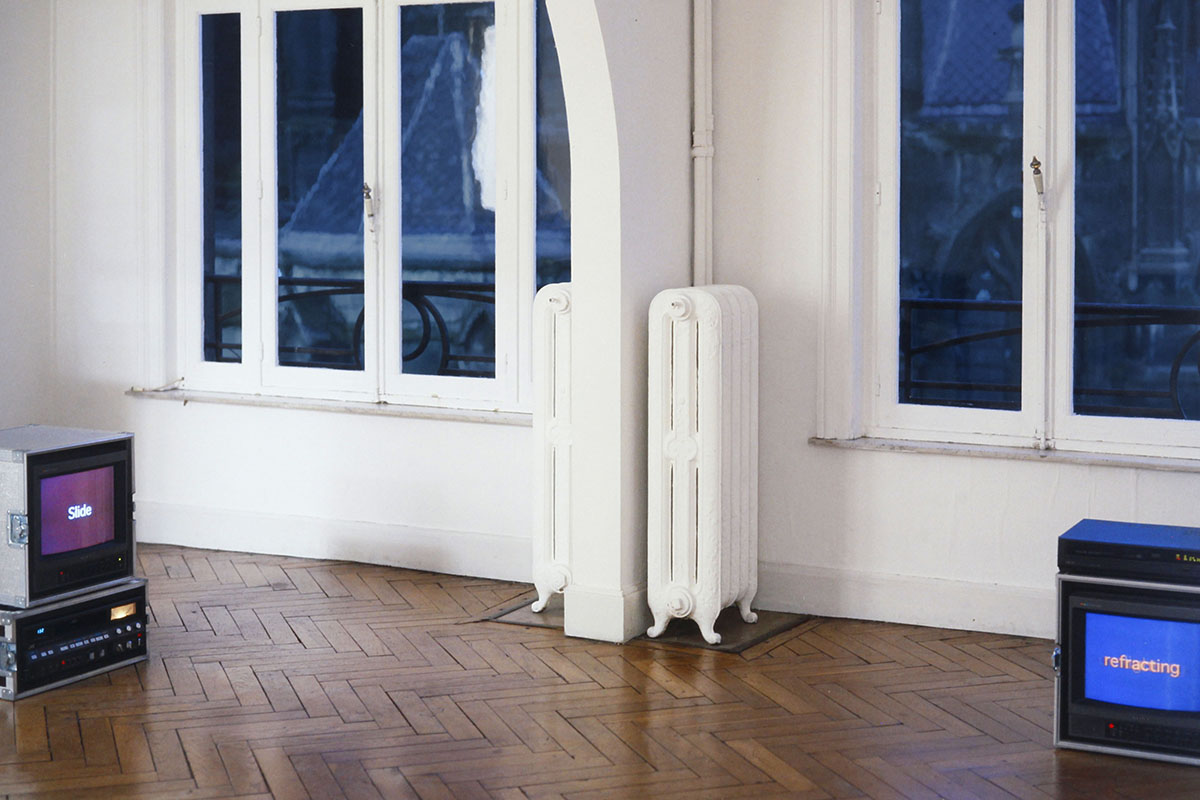
Invasions Naturelles
artconnexion, Lille, France, 1994
In 1994, for the exhibition that launched artconnexion, Lille, France, I exhibited various visual and written works as well as a video installation in her solo show Invasions Naturelles.
The work explored the fields of language and place, transfer and translation; I was experimenting with early computer animation software, creating emerging and dissolving words/sentences whose readings were affected by timing and colour co-ordinations and by the placement of monitors in the architectural spaces.
Attentive to the specific nature of artconnexion’s environment (the apartment at 10-12 rue du Priez, Lille), I released its potential: for the first time the site was perceived as a space of communication and exchange, a place for research and experimentation in art.
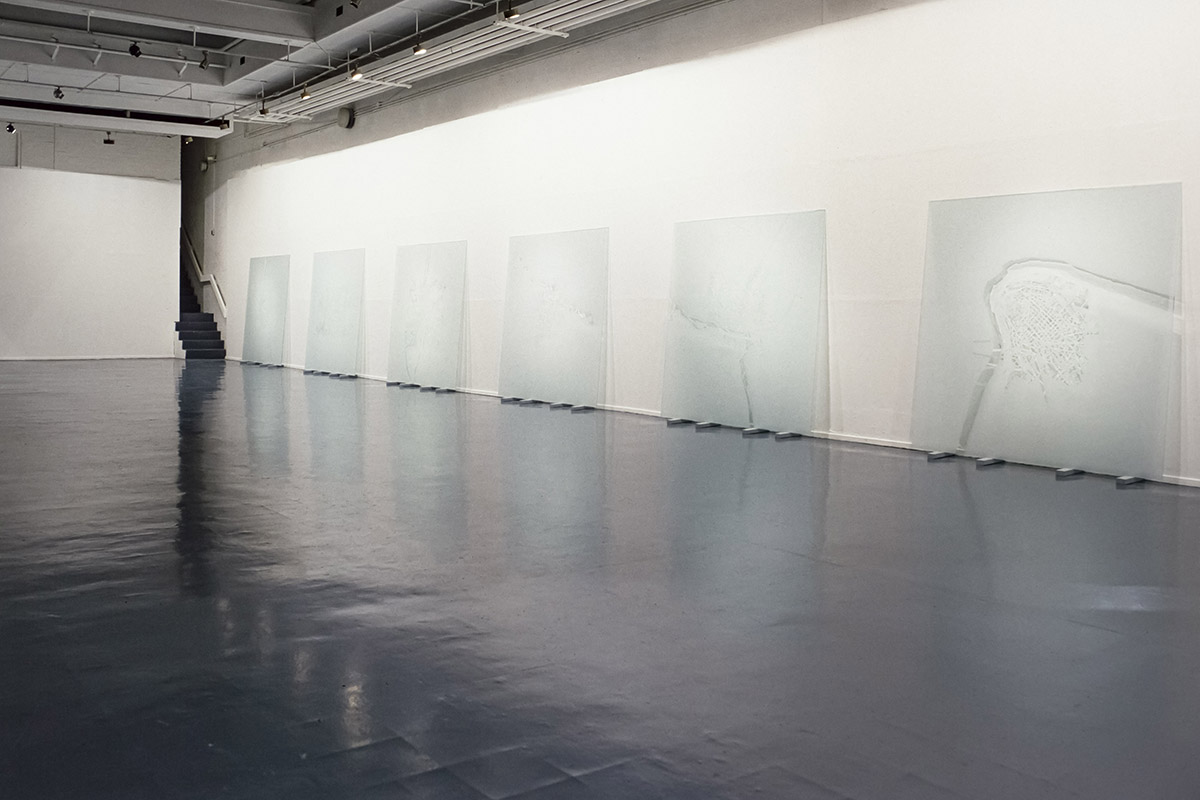
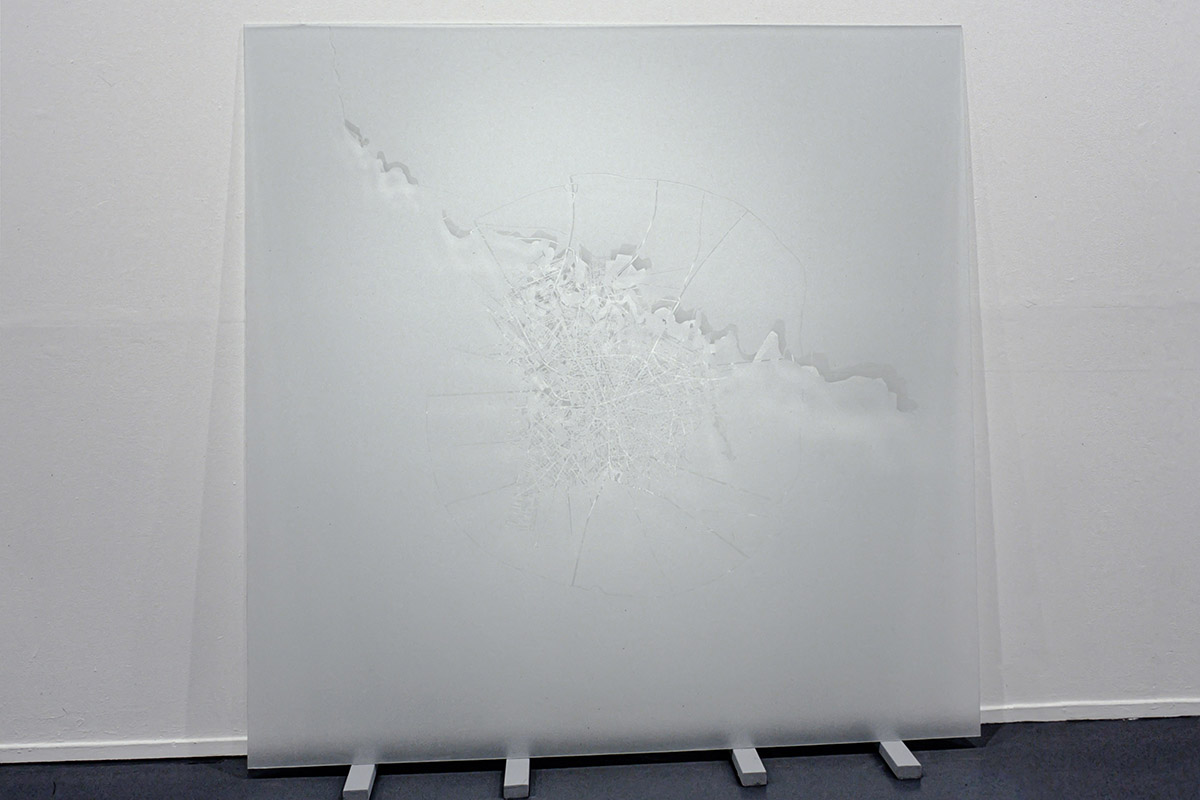
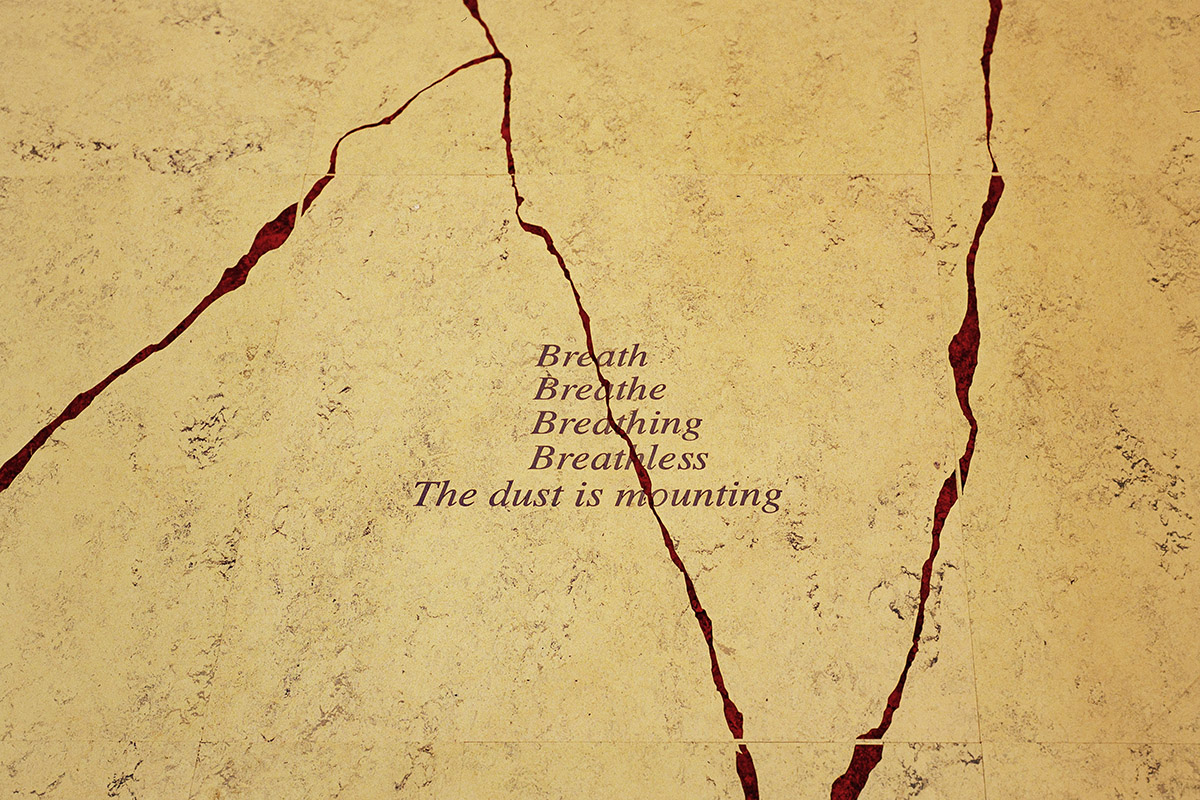
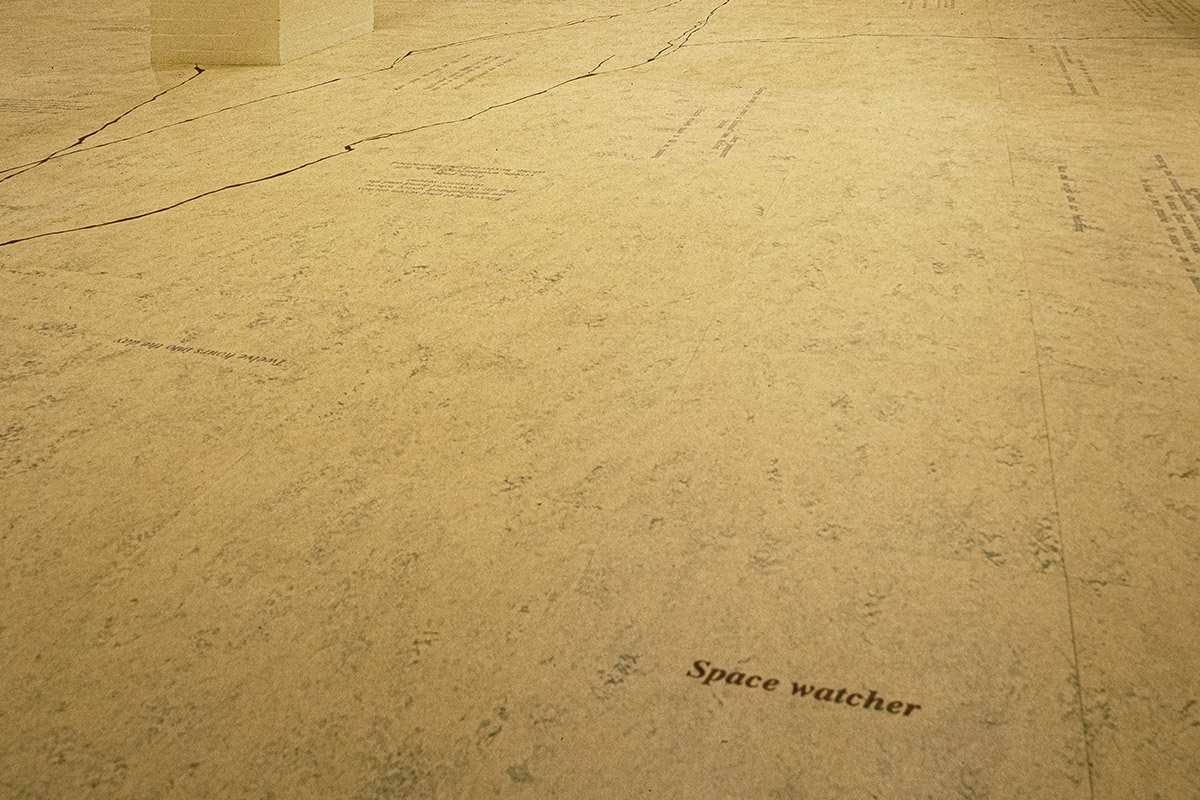
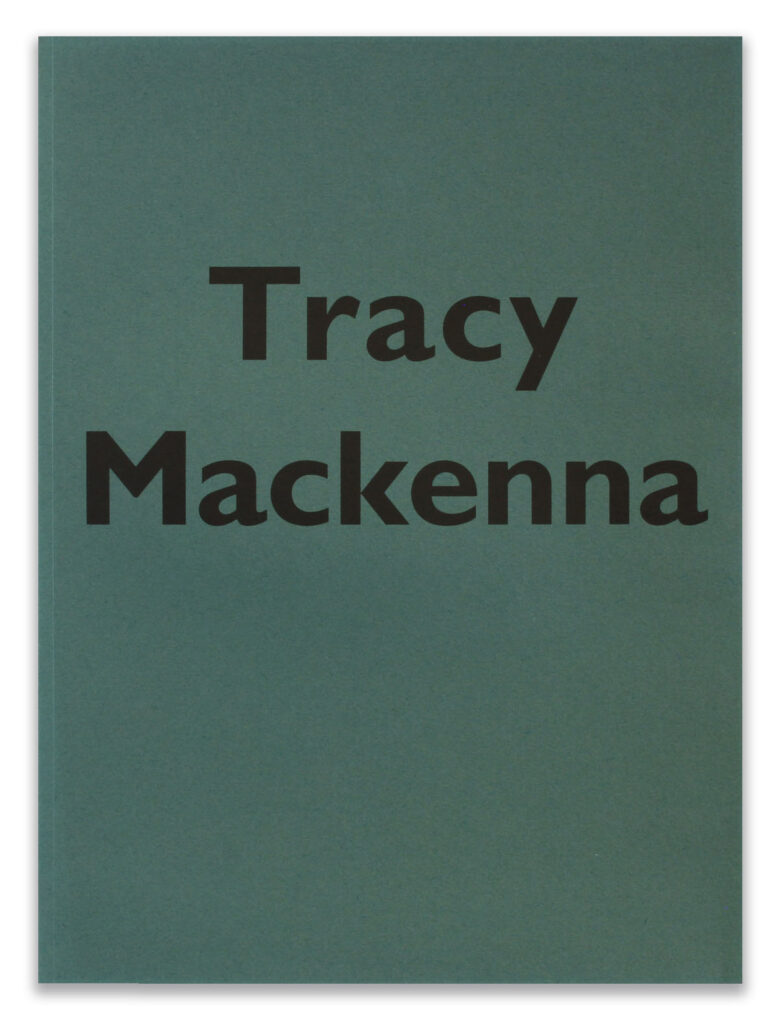
Tracy Mackenna
Solo exhibition and publication
CCA, Centre for Contemporary Arts, Glasgow, Scotland, UK
I had been living in Budapest, Hungary from the mid 1980s to the early 1990s. In that period I was walking, driving, filming and conversing – activating methods to explore and understand my Socialist-governed environment and the place of art in it. Embedded in Hungary’s contemporary art world, from there I explored the former ‘East block’ counties, and devised and realised a number of pan-European projects to enable artists from Hungary, Romania, former Czechoslovakia and the Soviet Union to be in residence and show their work in the UK.
Leading up to my solo show at CCA, Glasgow (1993; curated by Andrew Nairne) through writing (poetic, factual, documentary) and drawing (observational, subjective, automatic) and sculptural practice (installation, sculpture, film) I devised a series of artistic ‘counter-mapping’ approaches to present, communicate and think through place, people and time.
A natural collaborator, I worked with Forbo Flooring Systems to test the newest water-based cutting technology, to produce the large-scale linoleum floor that contained a spatial ‘essay’. The glass works were produced in collaboraiton with Glasgow’s East End family firm Hurry Bros, extending their sandblasting techniques and facilities to produce their largest scale pieces.
To accompany the exhibition, CCA produced the publication
Tracy Mackenna, Centre for Contemporary Arts, ISBN 1 873331 09 3, 1993.